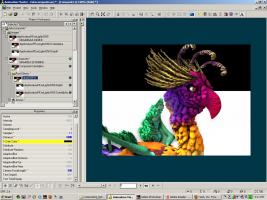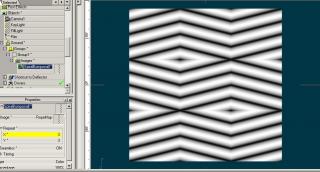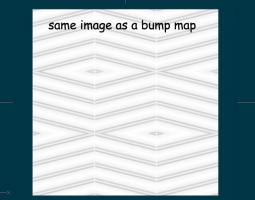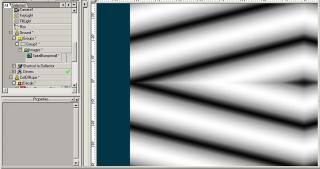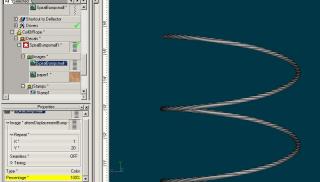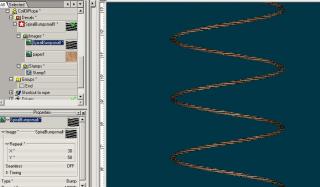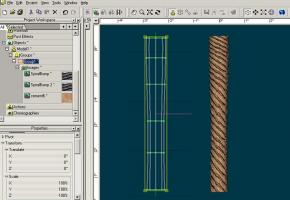-
Posts
7,863 -
Joined
-
Last visited
-
Days Won
15
Content Type
Profiles
Forums
Events
Everything posted by NancyGormezano
-
That's great ! - love the transformation - clever!
-
cute - nice style!
-
I got error message from photoshop (ver 6.01, PC): "Could not open Monitor_Logo.psd because an unexpected end-of-file was encountered". However, I was able to open the 07NewAMLogo.psd, as well as page_8x11.psd (in zip file) without any problem. EDIT: More than likely I won't submit something, but was just letting you know in case other's experience problem. Could it be my photoshop is too old?
-
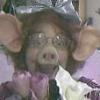
Thom with long cloth pants with cuffs
NancyGormezano replied to robcat2075's topic in Work In Progress / Sweatbox
nice jeans! nice cloth simulation, and the FastAO looks terrific. most recent version of FASTAO (aka FakeAO) found here Earlier thread with example tests, discussion of properties, how-to's found here FastAo (FakeAO) is a post effect plug-in that approximates the Ambiance Occlusion look - and is a bazillion times faster (like in minimal to none additional time for render) -

very superficial non-question; exploding stuff
NancyGormezano replied to dblhelix's topic in New Users
here's an example of John's: http://www.hash.com/forums/index.php?s=&am...st&p=331581 EDIT: here's another with project: http://www.hash.com/forums/index.php?s=&am...st&p=326382 -

very superficial non-question; exploding stuff
NancyGormezano replied to dblhelix's topic in New Users
There is a plug-in. which I haven't used, but I believe will take any model and create an exploded version - which you can then use with the Newton plug-in. right click in model window/plug-ins/wizards/Explode Rebuild model. My guess is that Johnl3d has used this, and more than likely you could find an example in his "Tinkering Gnome" part of the forum -
Not sure where I might find this option. Tools/Options/Rendering/Quality/shaded/show back facing polys =OFF
-
Thanks for the info. Very interesting effect!
-
cute! I am curious: How, or what did you do to get the "striped" type reflections?
-
It works with exr. I will document my steps for me (especially) and anyone else if they want to experiment with fakeao without rerendering. 1) render image(s) to openexr format (.exr) with camera/output/buffers/depth ON, and "apply post effects" = OFF. (For now, light buffers OFF). 2) import image.exr just rendered (or "add to project") 3) rt click: Images/New Composite 4) rt click: Post effects/new 5) rt click: Post Effects/Posteffect1/change type to/jenpy/fakeaocpu 6) drag fakeaocpu post effect to composite 7) expand image.exr to see 2 images color, depth. Drag the depth image to first place holder argument under composite/post effects/fakeaocpu. Drag the color image to second place holder 8) rt click on the composite/edit 9) change the properties for fakeaocpu under the post effects under the composite - and observe. whew.
-
okey dokey - i will give it a try - thanks!
-
Composite confoooses moi. I have 2 images - the depth buffer.png, and a color image.png I then want to combine these 2 images in A:M using the post effect fakeao, without always having to rerender, in order to try out the fakeao properties/settings. Is it possible to do this in ver16beta5 pc? using composite? some other way? Does composite only work on exr? I have read Holmes tutorial on Compositing Light Buffers - I believe I almost actually did the tut at some point in my life. I believe I got it to work. Somewhat. I could be lying. Or I was probably confused at that time as well. Here's what I have - how do I get the images into a composite? I can't seem to drag them. How do I change the place holder arguments for fakeao to be the depth (first one), and the color (second). Thanks for any insight, help.
-

Make a Phenakistoscope with Animation:Master!
NancyGormezano replied to robcat2075's topic in Animation
terrifically done! -
Sound is simple rt click on sounds/Import/ sound file (wav or mp3) drag sound to choreography set properties in shortcut to soundfile in chor - ie, start , end frames, volume, etc
-
There are now 2 crazy people in the room - I have seen that happen as well. I can't remember exactly what I did to bring it back...but more than likely it was to start the hair material from scratch. Blah. Before doing that, maybe instead close A:M and restart? I have noticed that funny stuff might happen when switching between Muhair and NOT muhair? Things go missing, or remain set, don't change. Also maybe from switching between dynamic type options (spring, constraint). Did you bake the hair? Was this a hair material created in a previous version? (what version are you using?) Can you describe in more detail what you had been trying?
-
I got it to play from the first link, but it was slow to start up. However, it seems the whole forum is slow for me today as well.
-
Spring hair is ...uh...springier. Bounces more wildly. I like it - but is harder to control. I usually set drag to 20%, Turn respond to gravity = OFF (so that hair returns to original styling and doesn't fall flat), but still respond to forces. Constraint type seems stiffer, less noticeable It doesn't (or didn't useta) seem to take any more time to compute.
-
Great little character, terrific chair. I am intrigued. (Your poem, character reminds me of Harold in the movie "Harold and Maude", one of my all time favorites)
-
Your image is not exactly "seamless" - I took it, applied it to ground plane, repeat 2 x 2, seamless ON. Looks like there's discontinuity 1 pixel wide?. For any pattern so regular, it would have to be exact to not show funnies. I am also guessing that there might be funnies moire-pattern wise, and possibly scintilating when resolving into small # of pixels. I have a horizontal stripe regular pattern that could also work as a cylindrical decal 1x20 repeat (doesn't have to be seamless)
-
yeah! Many many more! and Happy Happy Happyier than what he said! Thanks for all you do - Best wishes!









